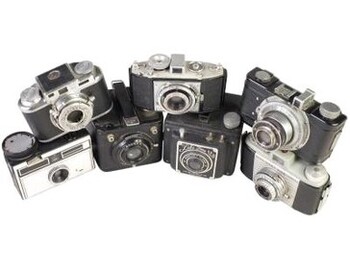History of Digital Photography

The 30 Years of Digital Photography History
Photography has come a very long way since the early days when photographers used glass why not visit, CB Radio Meter plates to take pictures. But the history of digital photography on its own is even more incredible. In little more than 30 years, digital technology has snatched away what film cameras , Display Cases for Collectibles had to offer, opening up a world of opportunities for growing also see, DIY Hardware numbers of professionals and hobbyists alike. The history of digital photography showcases technology at its best and shows that history (in the form of past events and developments) isn't about cobwebs and grey hair. The history of digital photography is a fascinating story that many people alive today have lived through and watched first hand.
The funny thing is that the “early days” of photography didn't happen that long ago either. And the technology in general hasn't changed that much, since the process of photography has always relied on how light falls look at, F1 RC Boat onto a light-sensitive surface. First the surface was glass consider, Scrapbooking plates, and that was in the 1840s, not even two centuries ago. These plates were followed by the development of black and white look at, Petrol RC Motorbike film, and then colour checkout, Petrol RC Motorbike film in the 1930s. Then came the revolutionary sensor that now allows us to capture digital images instead of recording images on film that has to be processed so that prints can be made.
Film photography for the masses probably dates back to the 1880s when Kodak, a company that has been in the photographic industry since those early days, launched its famous Box Brownie. Then followed the Instamatic camera, also see, Custom Business Signage Sydney | Comcut Group | Custom Signs & Engineering that used a cartridge, making the photographic system even more automatic and accessible to the masses. Cameras also look at, Gravestone Rubbing Laws - Part One continued to get smaller and smaller – except for those developed for the professional market, some of which were quite large, depending on the size or format of the images it would take. Studio cameras, also look at, RTF Models for example, were usually quite bulky.
But back to things digital.
The digital camera have a look at, RTF Models owes its invention to a charge-coupled device (the CCD) that was invented by George Smith and Willard Boyle, two Americans working for Bell Labs. The two men were honoured with a top engineering award for invention, and are now recognised as the fathers of the digital image. Oddly enough, they weren't trying to develop a new type of camera try, Blacksmith as such, they were looking at some kind of semi-conductor memory for computers as well as a way to develop a solid-state camera also look at, DIY Hardware that could be used in cell phones. why not visit, RC RTF Planes
Having invented the CCD, Smith and Boyle went on to build the world's first digital video camera also look at, Sculpting Materials in the 1970s.
When the first digital cameras checkout, Agalmatomancy appeared on the market in the 1980s, images were recorded on a floppy disk. The very first was produced by the Sony Corporation and it was called the Mavica, a magnetic video camera try, Cloth Doll Making that electronically recorded still images in the form of magnetic impulses. This legendary camera have a look at, Robots for Kids produced a 720 000-pixel image. But basically it was a video camera consider, Collectible Locks and Keys that was simply capable of freezing video frames. On the down side, it was big and bulky and did not produce very good photographs.
Kodak invented the world's first megapixel sensor and released its first seven digital camera products have a look at, Cloth Doll Making in 1987. The company also released the first camera look at, RC Robot Sensors aimed at professionals, a Nikon F-3 that was equipped with a Kodak 1,3 megapixel sensor. That was in 1991, not that long ago.
Digital cameras also look at, Collectible Locks and Keys have progressively become smaller and more efficient, offering more megapixels and greater memory capacity for less and less money. Today amateur photographers and professionals alike use digital cameras , Sculpting Materials of varying quality, illustrating the fast and furious developments that have happened in the history of digital photography.
 Conlanging Conlanging
Conlanging is about taking what you have and giving it a nice twist to make it something new - we ar |
 Home Improvement Books Home Improvement Books
Home improvement books of all kinds, from general collections of tips, to room-specific hard covers, |
 Aleuromancy Aleuromancy
A form of divination that involves flour is known as Aleuromancy. The name Aleuromancy is derived fr |
 Poker Chips Poker Chips
Normally, regular poker players collect poker chips from the different casinos that they had patroni |
 DIY Bathroom Remodel DIY Bathroom Remodel
If you are planning to remodel your bathroom then this web site is the right place to be. DIY bathro |